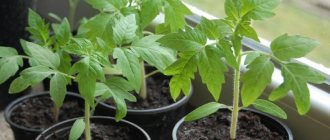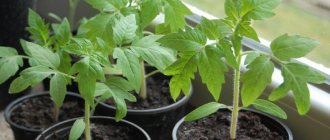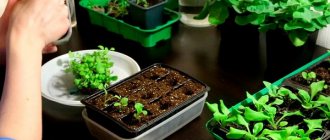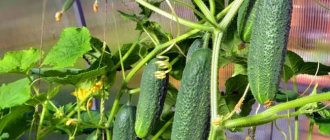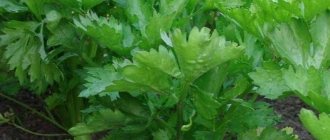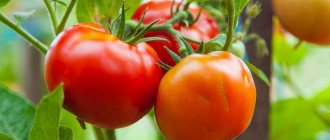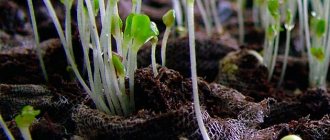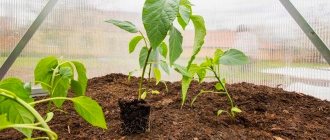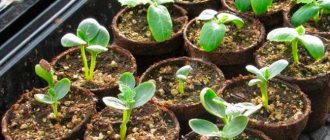Nowadays the climate is unstable. You don’t know what to expect from the weather tomorrow: snow may suddenly fall in the summer, heat may set in at the beginning of March, and frost may strike in April. Therefore, a greenhouse is the best way to grow vegetables and obtain a high and stable harvest. In this article we will tell you when to plant seedlings in a greenhouse in 2022.
Dates depending on the region 2. Temperature conditions 3. Dates according to the Lunar calendar 3.1. Cucumbers 3.2. Eggplants 3.3. Pepper 3.4. Cabbage 3.5. Tomatoes 3.5. Radish 3.6. Greenery
Photo: By observing the recommended planting dates, you will increase the chances of a good harvest.
What determines the timing of planting seedlings?
It is impossible to name any universal terms. For each crop and for each locality, there really are their own formulas for how to successfully calculate the day so that you can then have time with the harvest for sale, pickling or a holiday. And the weather is changeable, not to mention the fact that last year you could plant in open ground in May, but this year the snow has not yet melted everywhere.
But basically the determining factors are:
- The readiness of the greenhouse, namely the temperature of the air and soil, which directly depends on the material of the structure and the ability to heat it.
- The quality of the preparatory work, namely warming up the ground, installing warm beds and internal structures “a greenhouse within a greenhouse.”
- The manufacturer's recommendations specifically for each individual variety whose seeds you purchased.
- Traditions of the area, namely the experience of other owners of structures who have been planting seedlings for several years now.
- The readiness of the plants themselves is determined by external signs and the presence of true leaves.
- The cold resistance of varieties, which indicates how well the plants can preserve their roots during the night cold and not die.
If you have a polycarbonate greenhouse, we can congratulate you: it is in it that you can plant sprouts earlier than other places, like film greenhouses and especially open ground. And all because in such a design there are no cracks, and therefore there is no draft, and the air temperature is always noticeably higher.
As for the general recommendations for planting individual varieties, treat them exactly as general. The average temperature in the hospital is the same. Therefore, let's look separately at each type of variety and the conditions for its cultivation.
For example, already in mid-spring you can plant in an unheated greenhouse:
- Various salads
- Radish
- Chinese cabbage
- Mustard
- turnip
- Parsley
- Dill
For the northern regions of the country and the Urals, the most favorable time for landing is the second and third ten days of May. By the way, there is a fairly true folk superstition - if frogs start singing on the river, there will be no more frost.
Each vegetable has its own growing conditions. So, no matter how sunny and warm the place your greenhouse is located, there are certain requirements for it.
And the lunar calendar is also quite popular:
Advantages of greenhouse cultivation
It is not for nothing that the construction of greenhouses is very popular. This is explained by a number of its positive properties:
- It is possible to grow various vegetables in areas with unfavorable climate;
- The harvest can be obtained not only in summer, but also at other times of the year;
- You can grow seedlings in greenhouses. This way it is possible not only to keep the root system intact, but also to save a significant amount of money on the purchase of seedlings;
- Thanks to the presence of an individual microclimate inside the greenhouse, it is possible to start planting even in winter, when the temperature outside is still unfavorable for plant growth;
- Due to the special material used to construct the structure, harmful ultraviolet radiation does not reach the seedlings;
- The soil dries more slowly, providing the plants with the right amount of moisture;
- Seedlings are not subject to strong temperature fluctuations, which ensures their safety.
Is there still snow? Do not hurry!
The most natural winter treatment of greenhouse soil, as intended by nature, is snow. Here's how much work this collection of fragile snowflakes does:
- Almost all insect larvae and weed roots die under the snow in winter.
- But beneficial microorganisms usually overwinter well under snow.
- The gradual melting of snow evenly nourishes the entire soil thickness with distilled water.
- The water obtained in this way significantly reduces soil salinization.
So if you don't want your vegetables too early, let the snow do its job - you'll have a healthier, richer harvest.
Soil preparation and fertilizing
Humus, peat, sawdust, sand must be enriched with a teaspoon of sodium nitrate or urea, and also add 1 tablespoon of potassium and magnesium sulfate, add 3 tablespoons of double superphosphate and 500 grams of wood ash. Next, the fertilizer is scattered over the selected area and the soil is dug up.
Advice! Cucumbers should be fed with saltpeter every ten days in a proportion of 20 grams per bucket of water.
Tomatoes also need feeding every ten days:
- Option 1: dissolve 0.5 liters of liquid mullein + a tablespoon of nitrophoska in 10 liters of water. Each bush requires approximately 1 liter of solution;
- Option 2: dissolve a teaspoon of potassium sulfate in 10 liters of water, as well as a tablespoon of complete fertilizer (fertilize at a ratio of 5 liters per square meter);
- Option 3: in 10 liters of water you need to dissolve a couple of tablespoons of wood ash and a tablespoon of superphosphate (fertilize in a ratio of 6 liters per square meter).
Plants on which tomatoes have already formed must be fertilized with a solution of two tablespoons of superphosphate and one spoon of liquid sodium humate (5 l/sq. m). This type of fertilizer will speed up the ripening of fruits.
Determining factor: soil temperature
The most popular mistake beginners make is to plant seedlings in fairly cold greenhouse beds when the air itself seems warm. This is really a catch, because, it would seem, according to the laws of physics, first the earth is heated by the sun’s rays, and then the surrounding air is heated by it. And this is true, and the soil may indeed feel ready to the touch for growing plants on it, but we often forget that the roots are at depth. And it's cold there.
Take a regular outdoor thermometer and stick it into the greenhouse beds. Preferably to a depth of 10-15 cm, where the roots will fall first (and in an adult plant they will reach all of 60-80 cm, no doubt). So what's the temperature now? Around +10°C? Plant plants and they will stop their development for a long time.
It's all about stress from unexpected unfavorable conditions. Nature is smart, and a plant that has fallen from ideal conditions into frozen ground “thinks” that winter has come. Therefore, it quickly curtails its main functions and falls into real hibernation. How long will it take you to “wake him up” then!
And due to the extended adaptation period, fruiting will occur much later. And why then a greenhouse, when the same result could be achieved in the open air? Moreover, the harvest itself from such bushes, unfortunately, will not please you.
Therefore, soil temperature is a really important factor. Let's list exactly what it should be for a wide variety of seedlings:
- Cucumbers: +18°C during the day and +16°C at night.
- Tomatoes: +15°C during the day and +14°C at night.
- Eggplants: +18°C during the day and +16°C at night.
- Pepper: +15°C during the day and +14°C at night.
- Onion: +10°C during the day and +8°C at night.
More accurately:
Greenhouse location
When choosing a place where the greenhouse will be installed , the following factors should be taken into account:
- Features of the local landscape . This refers to slopes, groundwater levels, and proximity to water bodies.
- Placement of the building relative to the light . To successfully grow seedlings in a greenhouse, you should make sure that nothing interferes with the direct access of sunlight to the greenhouse. Therefore, you should not place it near houses, trees or fences.
- Convenient location . To care for plants, you will need communications, a convenient entrance and an access road.
- The soil . If possible, in order to avoid imported soil, the soil in the greenhouse site should be selected with special care.
How to determine the exact time of disembarkation?
Typically, all general recommendations are given for the Central region of Russia. The further north your greenhouse is, the further you move the dates; the further south, the earlier you can plant your seedlings, having previously measured the air and soil temperatures.
If you grew the sprouts yourself and remember well at what time the seeds were sown, then everything is simple. You add a certain period of time for each individual crop, and you get the exact day of planting in the greenhouse. But what if you bought the plants ready-made? How do you know when they can be planted? Now let's figure this out.
cucumbers
Cucumber seedlings are able to survive transplantation to the 20-23rd day of life without any problems. Moreover, you can even plant it in a greenhouse, where the temperature has only reached 20°C, if you warm up the beds themselves. To do this, they put manure or rotting sawdust in them and heat them with boiling water.
So, when the sprouts already have 3-4 leaves, they can be planted. In central Russia it is May 10-15.
Tomatoes
On average, the time for planting tomatoes is from May 1 to May 10, while in open ground only from the 25th. For tomatoes, the room temperature should be 24-25°C during the day and not lower than 19°C at night.
Tomato seedlings are ready for planting when they already have a root, a thick stem 30-35 cm tall, 6-8 true leaves and at least one flower raceme. The age of tomato sprouts is 45-50 days.
Pepper
10-15 days before planting the pepper, the plant can begin to harden. So, the air temperature in the room is gradually reduced to 17-18°C. First do this during the day, and a couple of days before disembarkation and at night. Three days before transporting to the greenhouse, water the seedlings well to preserve more roots, and cut off 2-3 lower leaves.
You can safely plant peppers in a polycarbonate greenhouse on May 20-25, when the soil is already warmed up to 18°C (check it with a thermometer at a depth of 15 cm). It is important to completely eliminate the risk of frost - pepper is the most unprotected of all greenhouse plants in this regard.
So, a pepper ready for planting looks like this: 8-10 true leaves, 20-30 cm stem height and small buds. The seedlings for pepper should be 70 days old.
Eggplant
2-3 weeks before planting, eggplants must be hardened, according to the same principles as other vegetables, but excluding drafts. The air temperature should be gradually reduced to 17°C. A week before planting, feed the eggplants, and the day before, sprinkle with Epinom-extra, taking 4 drops per glass of water - this will alleviate the stress of transplanting.
So, eggplant seedlings ready for planting look like this: 6-7 leaves and a stem 15-20 cm thick. If there are already buds, it’s not a big deal, but usually they form only after transplanting. The normal age is 50 days, and it is better to plant after June 5th. True, you can take the risk on May 20-25, if the weather is already suitable for flying. If it’s cold, wait a couple of days, otherwise you’ll ruin the future harvest.
Celery
Celery is planted on May 25, at the age of 70-80 days. The most problem-free culture, by the way.
Greenhouse options
Depending on the materials used for the construction of the structures described, they are divided into three types:
- Film ones are inexpensive. For installation there is no need to make a foundation, which simplifies the construction process, which anyone can master. A negative property of film greenhouses is their short service life, as well as unreliability;
- Glass perfectly transmits light and heat. They require a lot of skills, a strong frame and foundation to build the entire structure. If installed or used incorrectly, the glass may burst or break. Such greenhouses are not suitable for all seedlings, because on hot summer days the temperature in them becomes very high, which can lead to the death of plants;
- Polycarbonate is the most successful option for greenhouses. It is light in weight, has good strength, and provides seedlings with sufficient heat and light. Installation is simple. The finished structure has an attractive appearance and can serve its owner for about 20 years. Among the disadvantages are its high cost and flammability of the material.
On a note
To ensure that the space at the top of the covered area is not empty, while the tomatoes have not yet grown, you can plant tomato seeds for the greenhouse of low-growing crops in individual pots and hang them in the upper part of the structure.
Thus, while the lower ones grow and gain strength, the upper, early tomatoes will be the first to produce their harvest.
Formation of beds
For the greenhouse, you can use store-bought beds (sides and fasteners) or make them yourself. For store sides, plastic polycarbonate with a height of 20 cm is used. The prepared beds are filled with earth. You can also buy it in a store, or dig it up in a meadow or forest edge. It is important to take only the top layer of soil, no deeper than 25 cm. The soil must be prepared immediately after the snow melts so that it has time to mature. It should be placed indoors and covered tightly with an opaque material.
After 2-3 months, the soil can be laid out in the sun and covered with a transparent film. At this time, biochemical processes will begin to occur in the soil. Thus, it will fully ripen and be cleared of harmful microorganisms and insects. Such soil can already be used.
End of season cleaning
The hard-working greenhouse worked throughout the summer season, brought a considerable harvest and during this time accumulated a lot of fungi and spores. In order for the next season to also go off with a bang, without diseases and pests, you need to carry out thorough processing:
- The soil - it needs to be dug up, spilled with copper sulfate;
- Equipment, structures – it is recommended to wash them with laundry soap or other disinfectant;
- The room can be fumigated with a sulfur bomb or use a special preparation.
Needs of cucumbers
Cucumbers need regular watering in the evening (it is better to use the sprinkling method). The daily requirement of 1 plant is approximately 20 liters per 1 m². After the fruit begins to grow, the amount of moisture consumed is increased.
Trellis method
From the moment of planting, throughout the entire growing season, cucumbers are fed with organic and mineral fertilizers with an average frequency of once every 3 weeks.
The optimal physiological parameters for plant ontogenesis are as follows:
- the duration of daylight hours is at least 10-12 hours;
- the desired temperature regime for growth for seedlings varies between +25...+28 °C, for adult plants it corresponds to +17 °C;
- soil and air moisture slightly exceeds 85%.
Cucumbers, especially their seedlings, do not like drafts, which must be remembered when ventilating.
